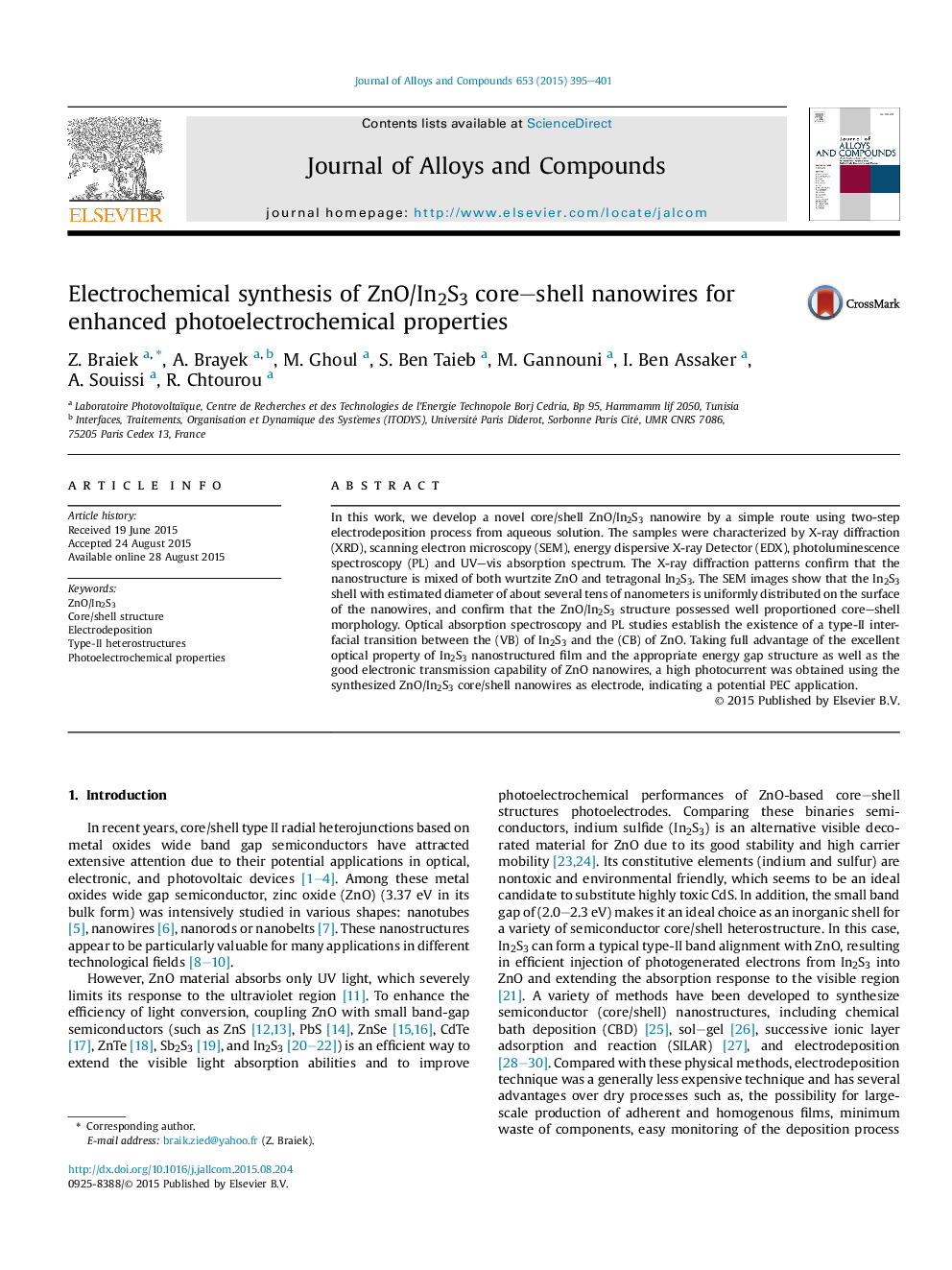| Article ID | Journal | Published Year | Pages | File Type |
|---|---|---|---|---|
| 1607574 | Journal of Alloys and Compounds | 2015 | 7 Pages |
•ZnO/In2S3 core/shell nanowires have been grown by two step electrodeposition method.•XRD analysis confirms that the ZnO/In2S3 core/shell nanowires are successfully prepared.•(SEM) indicate the homogenous distribution of In2S3 on the deposited nanowires.•Optical measurements establish the existence of a type-II interfacial transition between the two semiconductors.•The PEC performances of ZnO/In2S3 are greatly improved compared to those of ZnO.
In this work, we develop a novel core/shell ZnO/In2S3 nanowire by a simple route using two-step electrodeposition process from aqueous solution. The samples were characterized by X-ray diffraction (XRD), scanning electron microscopy (SEM), energy dispersive X-ray Detector (EDX), photoluminescence spectroscopy (PL) and UV–vis absorption spectrum. The X-ray diffraction patterns confirm that the nanostructure is mixed of both wurtzite ZnO and tetragonal In2S3. The SEM images show that the In2S3 shell with estimated diameter of about several tens of nanometers is uniformly distributed on the surface of the nanowires, and confirm that the ZnO/In2S3 structure possessed well proportioned core–shell morphology. Optical absorption spectroscopy and PL studies establish the existence of a type-II interfacial transition between the (VB) of In2S3 and the (CB) of ZnO. Taking full advantage of the excellent optical property of In2S3 nanostructured film and the appropriate energy gap structure as well as the good electronic transmission capability of ZnO nanowires, a high photocurrent was obtained using the synthesized ZnO/In2S3 core/shell nanowires as electrode, indicating a potential PEC application.
Graphical abstractFigure optionsDownload full-size imageDownload as PowerPoint slide
